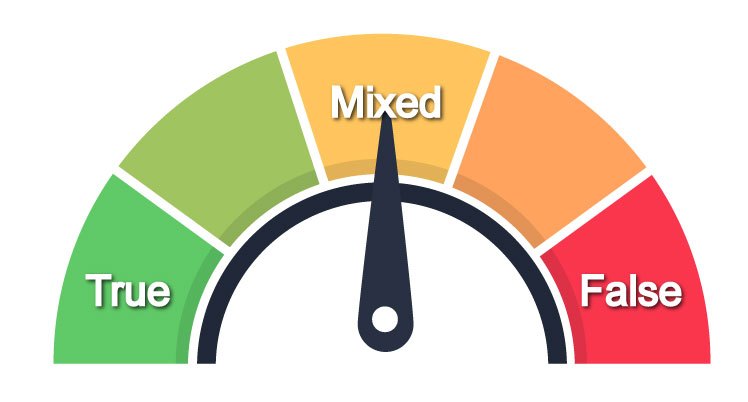Electoral Reform: Checking the facts -- Part one
Electoral reform fact check: the series — #1
Both sides of the Proportional Representation (“ProRep”) debate have made claims about what the effects of a ProRep system would be. What should voters believe? Here, two Political Science specialists delve into the major claims made about ProRep by both sides, to distinguish between fact from fiction. We’ll examine a different claim each week.
First, let’s introduce these two:
Dr. Brian Tanguay is a Political Science professor at Wilfrid Laurier University in Waterloo, Ontario. He was the lead author of the Law Commission of Canada’s 200-page 2004 report on electoral reform.
Dr. Denis Pilon is an Associate Professor at York University in the Department of Political Sciences. His research interests are Elections, Democratic reform, Class analysis, and Canadian/comparative politics.
In this segment, they examine the claim by ProRep proponents that voter turnout is higher in jurisdictions with proportional representation. As you’ll see, that claim is . . . mostly true, but with caveats. We can’t count on voter participation increasing if we change to ProRep, and if it increases at first, we can’t count on the higher rate of participation continuing.
Here’s what Pilon and Tanguay have found. The material below is copied from the “ProRep Fact Checker.”
Claim: “Voter turnout is 7% higher on average in countries with proportional representation.”
Stated by: Fair Vote Canada, on its website.
Fact Check
The accuracy of this claim depends on how the claim is phrased. The claim above is true, but there are not enough examples of before-and-after scenarios of countries moving from first-past-the-post to PR.
Research is clear that voter turnout is higher in countries with proportional representation than in countries with “winner-take-all” systems.
However, there is not much evidence that adopting proportional representation will lead to increased turnout in countries that were using first-past-the-post, simply because most OECD countries began using PR such a long time ago that there is little comparative data available.
Some notable research on turnout and electoral systems:
-
Multiple researchers have found voter turnout is higher in countries with proportional systems:- Lijphart (2012) looking at 36 democracies over 55 years found turnout to be 7% higher.
– Blais and Carty (1990) – 8% higher
– Norris (1997) – 6-10% higher
– International Democracy and Electoral Assistance (1999) – 12% higher among youth
-
Voter turnout has been declining across OECD countries for decades regardless of electoral systems.
-
A study in Switzerland comparing elections in about 2500 municipalities (communes) found that turnout was 3-7% higher in municipalities using proportional representation compared to first-past-the-post. This study was notable because it compared turnout rates using two systems within the same country.
-
A study in the US compared turnout data for 215 elections in 49 jurisdictions that used either cumulative voting (a semi-proportional system) or plurality voting (first-past-the-post). This study was notable because it compared turnout rates using two systems within the same country, but more significantly, this study also looked at turnout ratesbefore and after a switch to cumulative voting. Researchers found that cumulative voting increased turnout by about 5%, an increase that was sustained for the second election.
-
After New Zealand switched from first-past-the-post to proportional representation there was a small increase in voter turnout the first election with PR, then voter turnout fell into the gradual pattern of decline seen across the OECD.
- There is no research looking at a significant number of OECD countries that have switched from winner-take-all to proportional systems to assess the impact on voter turnout. This is because most OECD countries have had proportional systems for up to 100 years.
References
Blais, Andre and Carty, R.K. (1990). Does proportional representation foster voter turnout? European Journal of Political Research, 18: 167-181.
Bowler, S., Brockington, D., and Donovan, T. (2001). Election Systems and Voter Turnout, Experiments in the United States.The Journal of Politics. Vol. 63, No. 3 (Aug., 2001), pp. 902-915
International Institute for Democracy and Electoral Assistance (IDEA, 1999). Youth Voter Participation.
Karp, Jeffrey and Banducci, Susan. The impact of proportional representation on turnout: Evidence from New Zealand. Australian Journal of Political Science, Vol. 34, No. 3, pp. 363-377.
Lijphart, Arend (2012). Patterns of Democracy. Government Forms and Performance in 36 Countries. New Haven, CT: Yale Press.
Norris, Pippa (1997). Choosing Electoral Systems: Proportional, Majoritarian and Mixed Systems. International Political Science Review / Revue internationale de science politique Vol. 18, No. 3, pp. 297-312

























